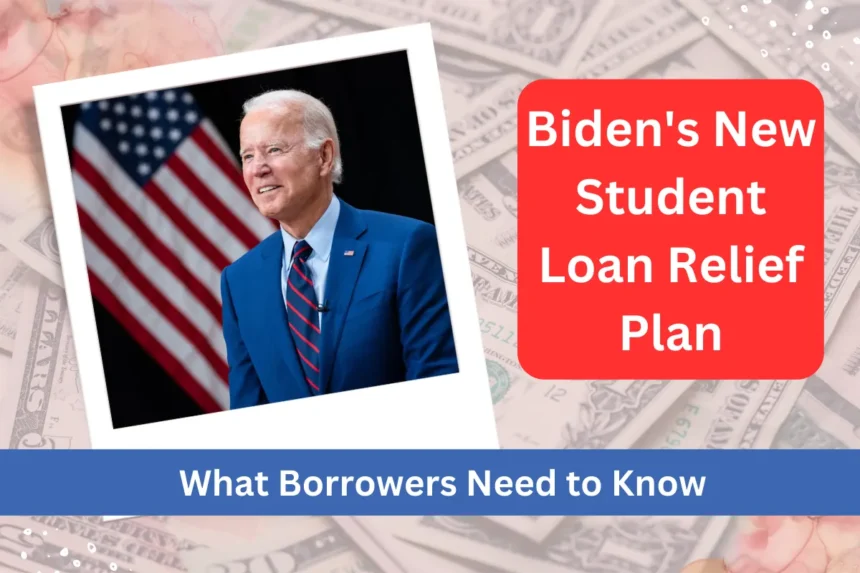Cody Gude, a 35-year-old from Tampa, was looking forward to July. His monthly student loan payment was set to drop from $200 to $100 because of the new Saving on a Valuable Education (SAVE) plan. This would allow him to stop delivering groceries for Instacart and focus on his job as a social media consultant. But recent legal issues have caused confusion for Gude and many other borrowers.
Uncertainty
Gude’s loan servicer, Nelnet, had already adjusted his monthly bill to the lower amount. The SAVE plan lets borrowers pay just 5% of their extra income (discretionary income) towards their debt each month instead of the previous 10%. Many can even qualify for a $0 monthly payment.
However, two federal judges in Kansas and Missouri have temporarily stopped the Biden administration’s new repayment plan. This has left Gude and others wondering if their payments will actually decrease or if they will receive a notice changing the decision.
Legal Challenges
President Joe Biden introduced the SAVE plan last summer to be the most affordable student loan plan ever. Around 8 million borrowers have signed up for this new income-driven repayment plan.
Before, under Income-Driven Repayment (IDR) plans, borrowers paid a part of their discretionary income each month and received forgiveness after 20 to 25 years. The SAVE plan replaced the Revised Pay As You Earn (REPAYE) plan, offering more generous terms.
But the plan’s generosity has sparked controversy. Borrowers with undergraduate student debt now only need to pay 5% of their discretionary income, down from 10%.
Those earning less than $15 an hour have a $0 monthly bill, and borrowers with smaller balances can receive loan forgiveness in as little as 10 years. Higher education expert Mark Kantrowitz describes the plan as “very generous to borrowers, almost like a grant after the fact.”
Court Decisions
The legal challenges to the SAVE plan come from Republican-led states like Florida, Arkansas, and Missouri. These states argue that the Biden administration is overstepping its authority with SAVE, attempting to circumvent the Supreme Court’s previous block of a sweeping student debt forgiveness plan.
Judge Daniel Crabtree in Kansas declined to roll back features of the SAVE plan already in effect, citing a lack of demonstrated irreparable harm.
However, he agreed to halt the provision that would lower borrowers’ monthly payments starting in July, highlighting the significant cost difference between REPAYE ($15.4 billion) and SAVE ($475 billion over the next decade).
In Missouri, Judge John Ross stopped the Biden administration from forgiving any more student debt under SAVE until he makes a decision, agreeing that the plan could reduce fees paid to the Missouri Higher Education Loan Authority (Mohela).
Future Outlook
The timeline for resolving these legal cases remains uncertain. Scott Buchanan, executive director of the Student Loan Servicing Alliance, predicts that the cases could drag on for months, possibly extending past the upcoming election. He believes the cases will likely reach the Supreme Court, which wouldn’t take them up until its October term, with a ruling expected much later.
What Borrowers Should Do
For now, borrowers can stay enrolled in the SAVE plan and continue benefiting from lower bills where applicable. While some provisions of the plan are paused, others, like the higher income shielding from payment calculations, remain in effect.
If your servicer updated your monthly bill based on the preliminary injunctions, your payment should soon revert to its previous amount. Mark Kantrowitz reassures borrowers that the court’s ruling is not retroactive, so there is no need to worry about losing any forgiveness already received.
In this period of uncertainty, it’s crucial for borrowers to stay informed and monitor updates from their loan servicers and the Department of Education. While the legal battle unfolds, the promise of lower payments and potential forgiveness hangs in the balance, leaving millions of Americans waiting and hoping for a favorable resolution.
FAQs
1. What is the SAVE plan?
The SAVE plan is a new student loan repayment plan introduced by President Biden. It reduces the percentage of discretionary income that borrowers need to pay each month from 10% to 5%.
2. How does the SAVE plan benefit borrowers?
The SAVE plan allows borrowers to pay less each month. Some may even qualify for a $0 monthly payment. It also offers loan forgiveness sooner for those with smaller balances.
3. Why are there legal challenges to the SAVE plan?
Some states argue that the Biden administration is overstepping its authority with the SAVE plan. They believe it is an attempt to get around a previous Supreme Court block of a broader student debt forgiveness plan.
4. What should borrowers do while the legal cases are ongoing?
Borrowers should stay enrolled in the SAVE plan and keep paying their adjusted bills. They should also stay updated with information from their loan servicers and the Department of Education.
5. How long will it take to resolve these legal cases?
It is uncertain. The cases could drag on for months and may reach the Supreme Court, which might not take them up until its October term, with a ruling expected much later.




